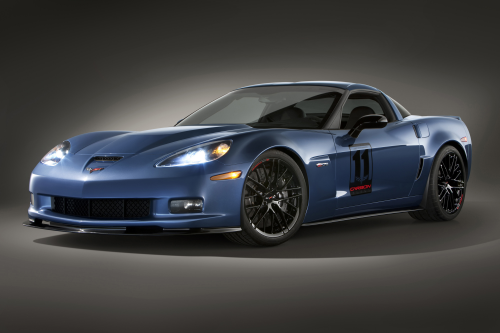
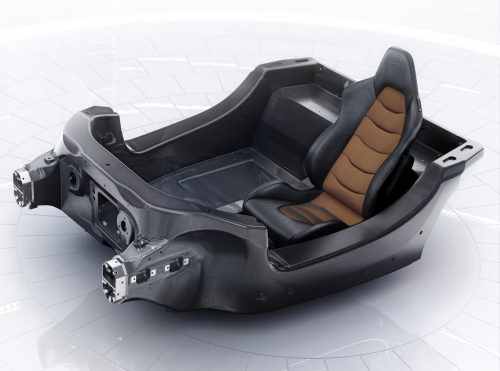
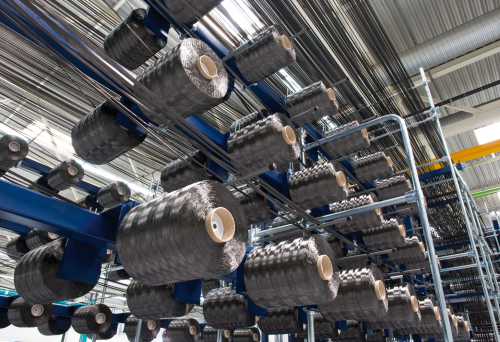
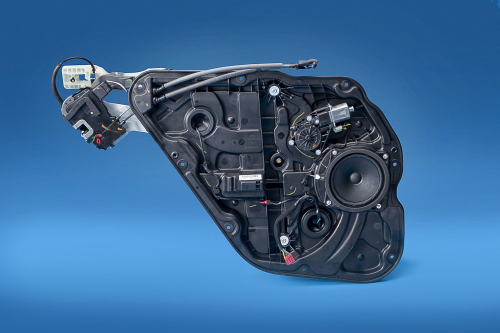
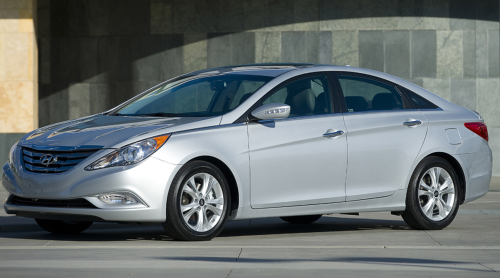
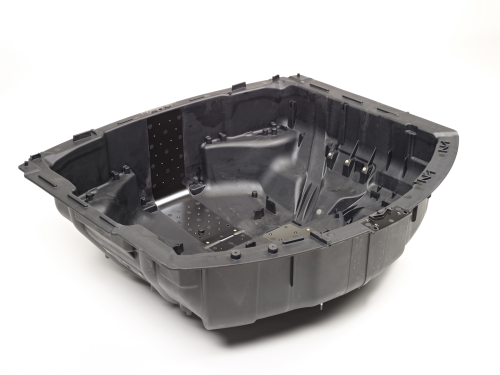
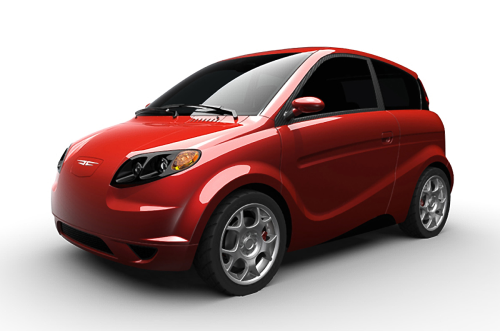
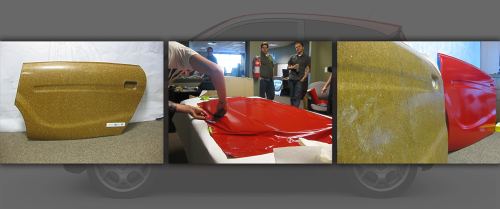
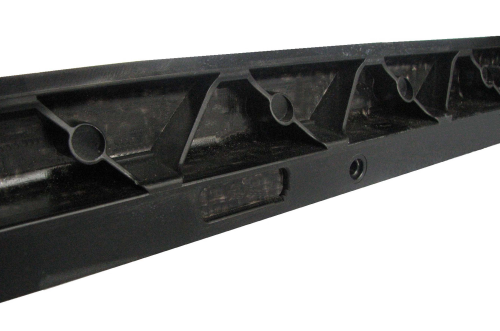
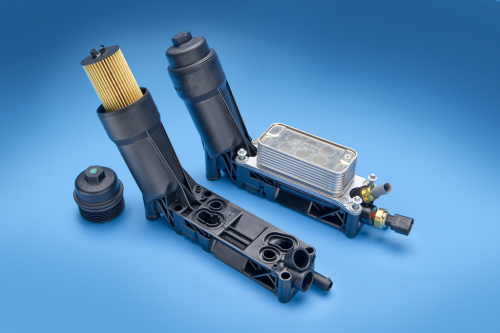
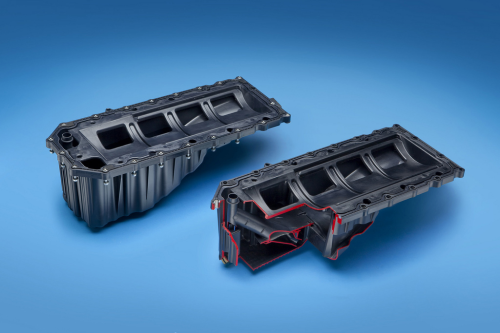
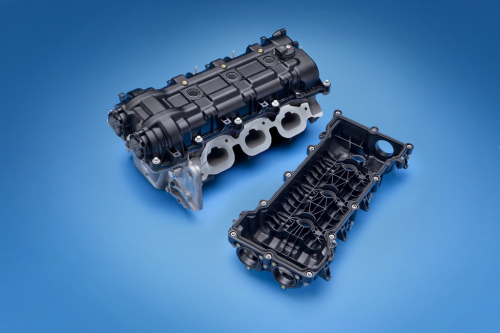
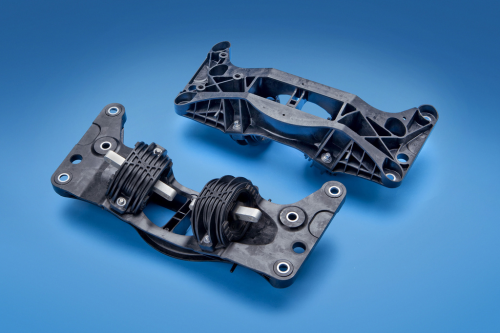
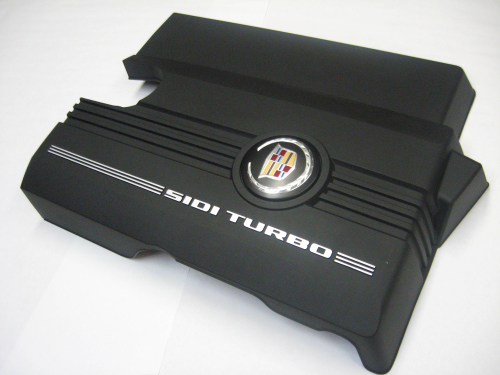
Pent up retail demand for new cars and trucks in North America is giving the automobile market a lift. Consulting firm AT Kearney predicts that US light vehicle sales will move back to historical levels (about 16 million) by 2012. Key indicators are on track for a “robust US automotive industry recovery” says Kearney, noting that most of the automotive suppliers that it surveyed in November expected 2010 to end at least 20% higher than 2009.
In China, new vehicle sales are booming. In Europe, however, registrations remained lower than last year’s levels as 2010 came to an end – down 5.7% in November, according to the European Automobile Manufacturers Association ACEA. There were notable exceptions, however. BMW brand sales were up 15% for 2010 versus the previous year, with strong sales in Germany, the US and China. Volkswagen was expecting an 11% increase over last year’s sales. Mercedes-Benz posted the best November sales of all time, continuing at the double-digit rate for the 13th month in a row.
It appears that demand for electric vehicles, which rely on lightweighting to counter their heavy battery packs, may not increase as fast as some believe. J.D. Power and Associates released a new report, Drive Green 2020: More Hope than Reality, which predicts that sales of hybrid electric vehicles (HEVs) and battery electric vehicles (BEVs) will make up only 7.3% of the passenger vehicles forecasted to be sold worldwide by 2020. By comparison, the report notes that HEV and BEV sales were expected to total 2.2% of all vehicles sold in 2010 globally. In the US, the extra US$5000 required on average to acquire one of the vehicles is a significant roadblock to higher sales, observes J.D. Power.
Carbon fibre positioning
Automotive applications of carbon fibre reinforced plastics (CFRP) are increasing. Lucintel has revised upward its forecast of growth in the carbon fibre market from 9.8% per year over the next five years to 13% per year. Its latest market report, Growth Opportunities in the Carbon Fibre Market 2010-2015, notes that “supply has increased to the degree that some manufacturers now have ample supply of carbon fibre with relatively low lead times to consumers.”
BMW, Mercedes-Benz, Lamborghini and other high-end automakers have committed to the increased use of CFRP components in their vehicles to reduce weight. Daimler has set a body in white weight reduction target of up to 10% for all of its models and is looking to carbon fibre materials for some of that weight saving. Daimler and Toray Industries are working to develop CFRP automotive parts using Toray’s High Cycle RTM [resin transfer moulding] process technology.
The SGL Group reported that sales in its Carbon Fibres & Composites business increased by 6% in the first nine months of 2010. The SGL Automotive Carbon Fibers GmbH joint venture with BMW is dedicated to producing carbon fibre for BMW’s Megacity vehicle, the company’s first production electric car. Carbon fibre will be manufactured in the USA, while the CFRP parts, including the passenger compartment structural cage, will be produced using an RTM process by BMW in Germany. The car is being called the world’s first large-scale production vehicle designed with a CFRP passenger cell.
Toray, another leading global carbon fibre manufacturer, has identified automotive applications as a top priority for its carbon fibre products. The company expects the adoption of carbon fibre composites to gain momentum in the near term as a means to produce significantly lighter vehicles. Through the collaboration with Daimler, Toray says it aims to establish mass production technology for CFRP automotive parts and further expand its carbon fibre and advanced composites business in the automotive industry.
Mercedes-Benz has been using carbon fibre composites since 2004, when the series production of the SLR McLaren high-performance sports car was launched. Today, the latest model, the McLaren MP4-12C supercar, features a CFRP MonoCell tub, moulded as a single-piece that is designed to protect the occupants. Produced by Austrian supplier Carbotech using Toray carbon fibres, the large component is a hollow structure that weighs less than 80 kg (176 lbs).
Lamborghini has also stated that it intends to add more CFRP components to its vehicles. The re-engineered Murcielago LP670-4 SV is lighter by 220 lbs, primarily because of the greater use of CFRP components, which provide an improved weight-to-power ratio and added agility, the automaker reports. A high priority is the development of out-of-autoclave curing to increase the production rate and reduce costs for future vehicle systems, says Lamborghini.
Composites have long been the material choice for concept cars, mainly because of the design freedom and reduced tooling costs they offer. Lamborghini recently introduced its CFRP demonstrator concept, the Sesto Elemento, which weighs only 999 kg (2204 lbs). For another concept, TenCate Aerospace Composites supplied carbon fibre materials for a 15 m long electric Superbus, which features a chassis entirely of CFRP, along with other carbon fibre components.
Chevrolet has introduced the 2011 Z06 Carbon Limited Edition Corvette, which features a carbon fibre hood, roof panel with a full-width body spoiler, rocker panels and air splitters. But the 2011 Corvette ZR1 carries even more carbon content – eight components with a total weight of 34 lbs (15.4 kg) or one half the weight of equivalent glass fibre SMC [sheet moulding compound] parts. CFRP parts for Corvette models and other vehicles are produced by Plasan Carbon Composites, the leading Tier 1 supplier of carbon fibre parts and assemblies in the USA.
Last spring carbon fibre supplier Zoltek announced the formation of Zoltek Automotive to focus on the development of high-volume applications for carbon fibre in the automotive industry. Zoltek has long viewed the automotive industry as the biggest single potential user of its carbon fibre. David Stewart, Chief Executive of Zoltek Automotive, recently observed that the value proposition and regulatory environment for carbon fibre automotive components have never been better. Stewart is the founder of Stewart Research, which has extensive experience in the automotive industry and composites.
“There is a large and rapidly growing range of applications where these materials are ready to come out of the laboratory and into high-volume production,” relates Stewart. “Our goal is to combine the materials expertise of Zoltek Companies, Inc. with the automotive analysis tools, testing capabilities and process knowledge of Stewart Research to match emerging lightweighting opportunities with the right composite designs and manufacturing processes.
Long fibre thermoplastics
Glass fibre manufacturer Owens Corning (OC) has stated that long fibre thermoplastics (LFT) are moving from an emerging market to a maturing sector with continuing growth potential, driven primarily by their use in the automotive industry. That is especially true in China, which is expected to become the leading global consumer of LFT composites in 2011. Among the factors driving the growth of LFT include the trend toward smaller vehicles, which increases opportunities for LFT because its stiffness is suitable for shorter part lengths, plus end-of-life legislation that requires recycling and is influencing a shift to thermoplastics from thermosets, says OC.
Stamax® long glass fibre (30%) polypropylene (PP) from SABIC Innovative Plastics is used to produce a door module with integrated window guide rail for the 2011 Hyundai Sonata. The module, which was awarded an SPE Innovation Award in the Chassis/Hardware category, replaces steel in all four door panels, cutting total vehicle weight by about 2 kg (4 lbs) and enabling 21 components to be integrated into a single injection-moulded part. Overall system costs were also cut as a result of streamlining five assembly processes into one.
A finalist in the Chassis/Hardware category was a structural composite radiator support compression moulded of direct (inline-compounded) LFT polypropylene and a glass-mat overlay from Dow Automotive and Composites One, the leading distributor of composite materials in North America. Manufactured by Magna International, the part for the 2010 Ford Taurus Sedan, replaced coated steel and cast magnesium parts, reducing weight by 33% and direct costs by 20%. The number of parts, material handling and assembly time were also reduced.
Magna Exteriors and Interiors, an operating company of Magna International, has partnered with the National Research Council of Canada in a joint private-public venture to develop lightweight composite technology for the Canadian and the global automotive industry at the company’s facility in Concord, Ontario. The programme is expected to include direct compounding of long fibre thermoplastic materials.
Long glass fibre reinforced polypropylene (PP) and short glass ASA/PBT materials were replaced by Thermylene 45% PP from Asahi Kasei Plastics in an integrated sunroof module for the 2010 Cadillac CTS sports sedan. Supplied by Inalfa Roof Systems Group BV, the novel design of the module consolidates four parts into one using the Mucell injection moulding process. Assembly time was reduced in the process, which also produced 12% weight savings, 24% component cost savings and 47% capital investment cost savings.
Another highly integrated component is the spare wheel recess for the 2010 Audi A8. Produced using gas-assist injection moulding, the component replaced steel and SMC. It was moulded by Voestalpine Polynorm Group using 60% glass reinforced Durethan polyamide (PA) 6 from Lanxess and an insert-moulded aluminium inlay. Despite the high glass loading, the resin is said to offer excellent flow and yields a part with very good surface quality. It is bonded into the body-in-white and contributes to chassis stiffness, reducing component weight 30% and tooling investment by 70%. It was judged the winner of the Body Interior category in the 2010 SPE Central Europe Awards programme.
Bio-based materials
An electric car featuring body panels made of an impact-resistant, bio-composite material debuted in Canada last summer. Designed by Motive Industries, the four-passenger Kestrel will be manufactured by a consortium of Canadian partners. Hemp mats are used to reinforce the composite, which is said to provide weight savings over conventional composite materials. The compact car weighs 850 kg (1874 lbs), including battery, and is expected to have a range of 160 km (99 miles). Paint film will be used to eliminate the cost of conventional spray painting, says Motive, which has set a production launch target date in 2012.
Royal DSM NV recently introduced two bio-based performance resins for automotive applications. Palapreg® ECO P55-01 is formulated specifically for body parts, including exterior panels, and EcoPaXX™, a high-performance polyamide, offers a high-melting point of 250°C, low moisture absorption and excellent resistance to various chemical substances, including coolant, oil and road salt, relates DSM. About 70% of the EcoPaXX material is based on building blocks derived from castor oil. Palapreg ECO is composed of 55% renewable resources, making it the resin with the highest bio-based content on the market, notes DSM.
BASF Corp offers Acrodur® water-based acrylic resin as an alternative to conventional formaldehyde-based reactive resins for the binding of natural fibres such as flax, hemp, sisal and wood for use in the production of shaped panels for automobile interiors. In certain applications, says BASF, it can also serve as an alternative to epoxy or polyurethane based binders. The Acrodur binder system is said to open new doors for a variety of natural and man-made fibres to produce lightweight composites using conventional processing equipment.
Hybrid composite parts
At the VDI Plastics in Automotive Engineering Conference in Mannheim, Germany, last year, the stars of the show were the innovative, lightweight FRP components on display. Lanxess highlighted in its booth the front end of the new Audi A8, which uses organic plastic sheet made of glass-filled Durethan polyamide 6 alongside aluminium sheet in the hybrid component. The critical lower beam is produced from Tepex continuous-fibre reinforced organic sheet material from Bond-Laminates GmbH.
Only 1 mm thick, the organic sheet is heated, formed and trimmed, then placed in an injection moulding tool, where more polyamide is added to create ribbing. Aluminium is used in the upper beam of the module. The Audi front end won the Grand Award and first place in the Body Exterior category in the 2010 SPE Central Europe Awards in Düsseldorf, Germany, in October.
Another innovative hybrid part, an FRP brake pedal with a single metal insert, was introduced by Sweden’s Trelleborg Automotive. The metal insert is over-moulded at the plastic injection stage, using water injection technology to create a tubular body along the pedal arm. The hybrid composite part provides weight savings of 30-50% over a metal brake pedal as well as cost savings as the result of faster assembly of the product, says the manufacturer.
Borealis displayed innovative automotive components produced from its compounds at the VDI show, including the auto industry’s first use of polypropylene (PP) for an air intake manifold, for which the company received the Frost & Sullivan 2010 Global New Product Award in the Under the Hood Plastics category. High-performance XMOD® GB306 (36% glass fibre reinforced) engineered PP compound contributed to production cost-efficiency and reduced overall production costs for the air intake manifold, says Borealis. Produced for Volkswagen, the component replaced a polyamide (PA) compound, providing weight reduction of up to 15%, better acoustic performance and improved recyclability.
Also featured in the Borealis VDI display was a BMW 7 Series dashboard carrier based on a 20% long glass fibre reinforced Nepol™ PP, which provided up to 20% weight reduction with the excellent impact and mechanical performance of heavier alternatives, says Borealis. System costs were also lower due to the compound’s improved warpage behaviour and improved processing, the company noted.
|
Demand for automotive components in carbon fibre is steadily increasing, according to Gary Lownsdale, Director of R&D and Engineering at Plasan Carbon Composites, the leading US supplier of CFRP parts to the automotive industry. “We are going to see a significant jump in demand starting in the 2013 model year,” he relates, noting that the areas of the roof and hood are especially well suited for the lightweight material. Plasan specialises in the production of Class A and structural parts for mid-volume production cars. The company is currently consulting with automakers on new vehicle programmes as far ahead as the 2016 model year. “Most of the car companies are showing interest in carbon fibre, especially in Europe,” says Lownsdale. He will split his time between a new Plasan sales and customer development centre in Michigan that will open in March, and the Oak Ridge National Lab, where Plasan is participating in the development of a lignin-based precursor for carbon fibre. The material, expected to reduce the cost of carbon fibre by 50% and be available by 2016, reports Lownsdale. Plasan recently introduced new technology that reduces the cycle time to produce carbon fibre parts. The technology is expected to enable the company to produce between 30 000 to 50 000 sets of parts annually, says Lownsdale. A hybrid, out-of-autoclave process, developed over the last two years by Plasan, is leading to a 10-minute cycle time with epoxy resin. Modelling and lab simulations of the epoxy curing process inside an autoclave was critical to the development of the new process technology and a move away from autoclave curing, he explains. Plasan’s ultimate target cycle time is two minutes. To achieve that mark, the company is establishing technology agreements with polymer matrix suppliers to jointly develop low-cost, fast-curing thermoplastic resins, says Lownsdale. Process equipment partnerships are also in the works to develop new machinery and automation to reduce the processing time to be compatible with the new resins and reduce the direct labour costs associated with the manufacturing. |
Akro-Plastic GmbH highlighted its Akromid® T (PPA) product line at the VDI show. The compound is said to be particularly suitable for high-temperature applications in the engine compartment. Another recent development from Akro-Plastic is Akromid RM (Reduced Moisture) on a PA 6 basis. The moisture absorption of polyamide can be significantly reduced without influencing other features of the material. Target applications include warpage-sensitive housings and plug connectors. Compounds with 30-50% glass fibre reinforcement are available.
High heat endurance
Ultramid polyamide resins from BASF were selected to mould several underhood parts entered in the SPE Awards programme. An on-engine oil filter module for the 2010 Hyundai Equus luxury sedan, moulded of a 35% glass-filled Ultramid PA 66 resin provides some remarkable advantages. The hydrolysis-resistant material was modified during polymerisation to increase hot glycol resistance at temperatures of 120-130°C, enabling the oil-filter to be mounted directly in the engine valley. It reportedly eliminated 148 separate parts, reduced weight by 43% and saved more than 60% in direct costs.
An oil pan module made of impact modified 35% glass reinforced Ultramid PA6 was named a finalist in the Powertrain category. Replacing stamped steel and cast aluminium, the 'next-generation' module for Chrysler 5.7 litre Hemi engines reduces weight by 41%, saves 50% on tooling costs and eliminates four assembly operations. An Ultramid 35% glass filled PA 66 resin was also used to mould an engine cam cover for the 2011 Jeep Cherokee SUV – the first time a plastic surface has been used for a cam variable valve timing cover. The cam cover replaced machined die-cast aluminium, saving 2.2 kg and 25% direct material costs.
A 50% glass reinforced Ultramid polyamide was used to develop heavy-duty structural components for vehicle engine mounts, which provided a weight savings of up to 50% over traditional steel or aluminium mounts for the 2009 BMW 550i and 750i sedans. Processed by ContiTech Vibration Control GmbH, the components, featuring integrated hydraulic mounts, are the first lightweight plastic design to be used in this application.
Underhood SMC parts
Thermoset SMC parts have taken a place among other innovative composites applications in the SPE Awards competition. Among them was a lightweight one-piece compression moulded battery cover assembly for the 2011 Chevrolet Volt HEV. The component was produced using a special low/mid density SMC developed by Continental Structural Plastics (CSP) for this application, saving 1.12 kg over standard SMC, according to the materials supplier. The part features installed hardware seals, a reflective foil covering and 73 openings to fasten the cover to the Volt’s battery tray.
CSP has developed an ultra-low density SMC with help from automotive composite resin manufacturer AOC. The proprietary SMC, called TCA Lite®, provides a Class A surface while reducing weight by up to 20% versus standard SMC, relates the manufacturer. Advances in SMC materials used for body panels and other parts requiring a Class A surface have made surface quality issues largely a thing of the past.
|
The Most Innovative Use of Plastics Award in the 2010 SPE Innovation Awards Competition went to an acoustic engine cover for the Ecotec 2.0 litre Turbo engine powering Cadillac CTS vehicles. The component is moulded of DuPont™ Zytel® Plus polyamide (35% glass content) by Camoplast Polymer Solutions, Quebec, Canada. Despite the glass content, the part retains a high-gloss, uniform appearance, which is critical in ‘beauty covers,’ notes DuPont. Zytel Plus, introduced last March was selected for this application because it retains its mechanical properties and surface appearance despite long-term exposure to temperatures of 180°C, which are common in turbo-charged engines. “Today’s engines create more demanding environments, and each component and system faces a different formulation of ‘chemical cocktail’ or a different load at temperature. One material can’t do it all,” relates Patrick Ferronato, Global Marketing Director, DuPont Automotive Performance Polymers. DuPont offers five Zytel Plus nylon grades and two grades of Zytel HTN92 Series resins based on DuPont Shield Technology, which combines a new polymer backbone, polymer modifications and a special set of additives to enhance performance characteristics. The Zytel formulation used to mould the Cadillac engine cover features a polyamide copolymer with the new Shield technology, which is said to provide high-heat stability and double the heat-aging property retention of conventional polyamides and some higher-cost speciality resins. The material handles the application’s routine 180°C service temperature and periodic 200°C peaks while offering easy processing, good surface finish, fast cycle times and extended performance at up to 30% lower cost than speciality resins in this demanding underhood application, DuPont relates. |
Another innovative SMC entry in the SPE Awards programme was a compression moulded part for the 2010 Jeep Wrangler. The component, which provides impact protection for a fuel pump, is a new application for thermoset composites. Produced using Prem-Glas 1286 Hybrid Vinylester and Polyester SMC from Premix Inc, the part replaces a die-cast metal and polyamide component for a 50% weight savings and 50% cost reduction. Compression moulded SMC offers short tooling lead times and excellent dimensional tolerances, plus impact strength that exceeded both metal and polyamide, Premix notes.
This article was published in the January/February issue of Reinforced Plastics magazine.





